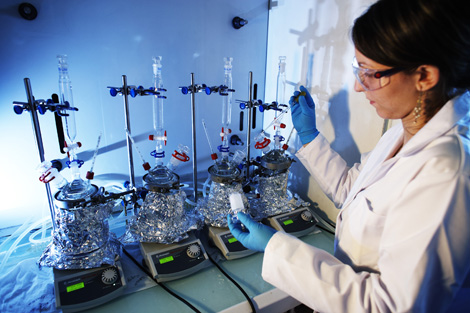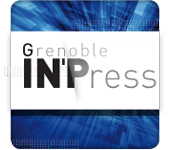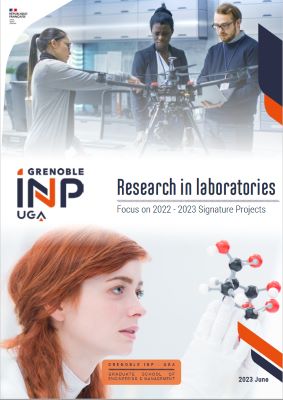LGP2 has also focused its attention on very promising cellulose derivative particles: nanocellulose.
There are two types of nanocelluloses: nanocrystalline cellulose (NCC) is akin to nanometric-sized rice grains, measuring 100 to 1,000 nanometres in length and 2 to 20 nanometres in diameter. It is obtained by destroying the amorphous zones of the cellulose fibre with sulphuric acid. Microfibrillated cellulose (MFC) is a spaghetti-like element, 500 to 1,500 nanometres long and 10 to 30 nanometres in diameter, produced by abrasion of the fibre.
There are two types of nanocelluloses: nanocrystalline cellulose (NCC) is akin to nanometric-sized rice grains, measuring 100 to 1,000 nanometres in length and 2 to 20 nanometres in diameter. It is obtained by destroying the amorphous zones of the cellulose fibre with sulphuric acid. Microfibrillated cellulose (MFC) is a spaghetti-like element, 500 to 1,500 nanometres long and 10 to 30 nanometres in diameter, produced by abrasion of the fibre.

Manufacturers are taking an increasing interest in these particles due to their exceptional properties. “As soon as their volumetric fraction allows it, the NCC units organise into a network to form a matrix with exceptional mechanical properties that can achieve the resistance of Kevlar while remaining very light, explained Alain Dufresne, professor at Grenoble INP - Pagora and researcher at LGP2. Furthermore, nanocellulose has useful optical properties, is impermeable to gas and stable over time”. All these qualities appeal to manufacturers in sectors such as composite materials, packaging, the biomedical industry, the agrifood industry, the cosmetics industry and so forth.
Pagora on strong position
Grenoble INP - Pagora boasts a strong position in the knowledge of cellulose and is conducting several research projects on these materials. For example, at LGP2, researchers and doctoral candidates are trying to endow these materials with new properties depending on the target applications. “As part of the European NewGenPack project, we are trying to endow the nanocellulose with antibacterial properties to create active food packaging, explained Julien Bras, lecturer at Grenoble INP - Pagora and researcher at LGP2. As is the case with the Panagro project conducted in cooperation with Agro ParisTech, we can also modify their surface to endow them with gas absorption properties that will help to improve meat preservation”. In the medical field, nanocellulose particles could be used to manufacture bandages containing medicines that would be gradually administered. Finally, the rheological properties of nanocellulose in suspension make it suitable for use in cosmetics (nail polish) and in the agri-food industry as a texturing agent (yogurts).





